Are you a Quiet Speculation member?
If not, now is a perfect time to join up! Our powerful tools, breaking-news analysis, and exclusive Discord channel will make sure you stay up to date and ahead of the curve.
It's important to consider alternative solutions to any problem. No matter how clear the solution to a given problem may be to you, never discount the possibility of other perspectives offering insight. Or that biases can blind to us to potential solutions. Either way, entertaining alternatives can get the creative juices flowing. Which is why today, we'll consider a relatively unpopular narrative: that the issue with Uro is less about Uro, and more about the lands it tends to accompany.
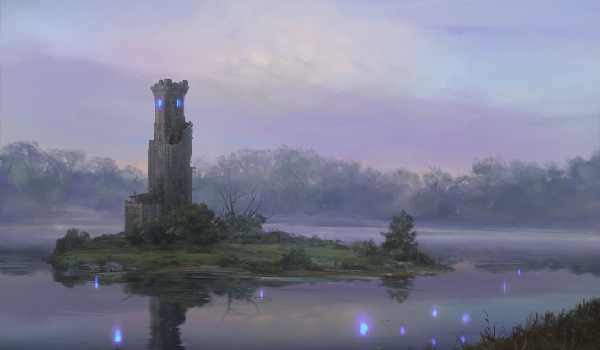
Last week, I examined the MOCS results and noted that a lot of players keep complaining about Uro. And that the complaints weren't unjustified, even if the much of the problem stems from player mistakes and misreading the matchup. However, at roughly the same time there was a reddit thread arguing that the real problem was Mystic Sanctuary and Field of the Dead. If anything was to be banned, it should be the lands first. Ignoring the lengthy thread about printing Wasteland into Modern (just... no), there were some decent points to address. These two lands are very good, and may be overpowered. However, there's a lot of context that goes into that consideration.
Is there Merit?
It's always important to separate out the wheat from the chaff when answering arguments. I only have so much time and so much space to answer things, after all. The most common complaint I saw in the thread was that Sanctuary and Field aren't fun to play against, and the format would be better off without them. This is personal preference, not an argument, and so can't be evaluated or considered. Fun is inherently subjective. For every player that finds a given gameplay aspect boring, there's someone else who enjoys it. Which is a plausible explanation for why there are still Lantern Control players in the world.
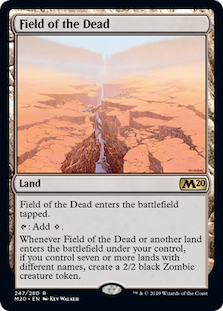 The other argument I'm ignoring is power. I've heard players argue about whether the lands are too powerful and compare them to other cards, both legal and banned. However, power isn't something that can be objectively measured. Looking at Necropotence vs. Goblin Guide, for instance, how does one actually measure their power in a vacuum? I don't think that many competitive players would object to me saying Necropotence is the stronger card, but to reach that conclusion requires considerable knowledge about the card's history. Necro was derided as the worst card in Ice Age back in the day, so power clearly isn't objective. Indeed, attempting to quantify power strikes me as an infinitely regressive and space-consuming ordeal.
The other argument I'm ignoring is power. I've heard players argue about whether the lands are too powerful and compare them to other cards, both legal and banned. However, power isn't something that can be objectively measured. Looking at Necropotence vs. Goblin Guide, for instance, how does one actually measure their power in a vacuum? I don't think that many competitive players would object to me saying Necropotence is the stronger card, but to reach that conclusion requires considerable knowledge about the card's history. Necro was derided as the worst card in Ice Age back in the day, so power clearly isn't objective. Indeed, attempting to quantify power strikes me as an infinitely regressive and space-consuming ordeal.
For that reason, I'll concentrate on the two arguments that can actually be evaluated: 1) Sanctuary and Field are becoming too saturated, and 2) their deckbuilding restrictions are too low, putting unfair pressure on the opponent's card choices.
Key Figures
There are two ways to look at saturation: by deck, and by individual card. Sanctuary is only found in slower blue decks, of which the Uro Pile is the most common, in all its associated forms. UWx Control also has at least a few. Field is also played in Uro decks, but it started out as a key card in Primeval Titan decks, and that hasn't changed. So, I'll add up the decks playing one card or the other. Last month, the 4c Omnath version of Uro Pile was the top 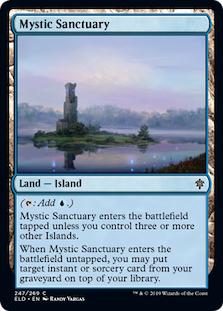 deck in Modern with 11.11%, and Sultai Uro had 2.05%. That's 13.16% of decks that (typically) ran both Sanctuary and Field. Field gets an additional 7.69% from Reclaimer and Amulet Titan for a total of 20.85%. Sanctuary gets 3.42% from Jeskai and UW Control for 16.58%. That's a chunk of the format, certainly, but remember, much of that is coming from a single deck.
deck in Modern with 11.11%, and Sultai Uro had 2.05%. That's 13.16% of decks that (typically) ran both Sanctuary and Field. Field gets an additional 7.69% from Reclaimer and Amulet Titan for a total of 20.85%. Sanctuary gets 3.42% from Jeskai and UW Control for 16.58%. That's a chunk of the format, certainly, but remember, much of that is coming from a single deck.
The individual card statistics back up my metagame conclusions. As of the day I looked them up, MTGGoldfish puts Field and Sanctuary at the 19th and 20th most played lands in Modern. Both show up in 19% of decks. It's worth noting that Field of Ruin is the highest-placing utility land, at 16th place and 20%. Uro is the 16th most played non-land and appears in 18% of decks. MTGTop8 has Field of the Dead at 16 with 18.3% over the past two months while Sanctuary is at 27th with 16.8%. Uro is 22nd with 18.0% and Field of Ruin is 24th with 17.6%. These are certainly high figures, but is that really format saturation? Oko, Thief of Crowns was pushing 40% before being banned, and Once Upon a Time was at least as prevalent. There's perhaps room for concern, but when Cleansing Wildfire is (currently) in 21% of decks, I'm not too worried.
Deckbuilding Restrictions
The other good argument is about the lands severely taxing the opponent's interaction. Field and Sanctuary are lands, and Wizards doesn't like land destruction. They've had a habit for years of just not making playable land destruction effects, and that really came back to bite them with Field. Wizards had to ban Field first in Standard and then Pioneer because it generated too much value too easily, and there was little viable counterplay. Even with Field of Ruin around, there was little hope of hanging with the Field decks in either format, and they had to go.
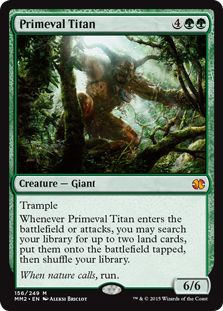 Modern has better answers to lands (Blood Moon chief among them), but it also has far better enablers. Hour of Promise, Primeval Titan, and Elvish Reclaimer are legal, and there is an even wider array of lands to fulfil Field's conditions. Standard decks had to get creative to always have seven different names on their lands. Modern features redundancy (i.e. Hallowed Fountain and Prairie Stream) and, more importantly, fetchlands. Thus, it's far easier to actually get Field active, and then keep it active via pals like Wrenn and Six or Afterlife from the Loam. Such engines also negate land destruction, making Field even more robust and limiting Modern's options as badly as Standard's.
Modern has better answers to lands (Blood Moon chief among them), but it also has far better enablers. Hour of Promise, Primeval Titan, and Elvish Reclaimer are legal, and there is an even wider array of lands to fulfil Field's conditions. Standard decks had to get creative to always have seven different names on their lands. Modern features redundancy (i.e. Hallowed Fountain and Prairie Stream) and, more importantly, fetchlands. Thus, it's far easier to actually get Field active, and then keep it active via pals like Wrenn and Six or Afterlife from the Loam. Such engines also negate land destruction, making Field even more robust and limiting Modern's options as badly as Standard's.
Sanctuary has never really done anything in Standard, as far as I know. It's not too hard to get hit four islands, but there aren't many spells worth recouping over and over. The former is even more true of Modern, but Modern also has Cryptic Command, letting players soft-lock opponents. Whether it's fogging combat steps or countering spells, a Cryptic bouncing Sanctuary over and over is a huge burden for the opponent to climb, and is very annoying. This can only happen every other turn without help, but it still buys an inordinate amount of time and value off a fetchable land. These are legitimate criticisms. However, I'm not persuaded.
The Context
Both Sanctuary and Field are late-game cards. I would expect them to gain increasing amounts of value as the game progresses. They're like planeswalkers in that regard. Accumulating absurd value is the entire point! If they didn't generate more and more value as the game went on until it became overwhelming, they'd serve no purpose. The question is whether or not that is being done too easily or quickly. And the follow-up is whether that unacceptable accumulation will always follow Field and Sanctuary around, or if another card is to blame. And I'll argue that Uro is more at fault for Field and Sanctuary's sins than they are.
Convergent Evolution
The first thing to remember is that the current situation has been building for some time, and for the vast majority of that, there was little problem with either Field or Sanctuary in Modern. Field was released July 12, 2019. And it didn't do much initially, mostly just showing up as a one-of in Amulet Titan. The other ramp decks were Tron and Valakut variants; the former couldn't trigger Field, and the latter didn't need to. Field really didn't start seeing much play 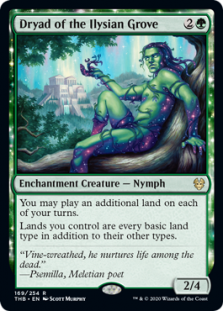 until February after Theros Beyond Death brought Dryad of the Illysian Grove, letting Amulet Titan run more utility lands than previously possible. At that point, all the non-Tron ramp decks started to merge together. As the year progressed, they increasingly blended into the value decks to create the current version of Uro.
until February after Theros Beyond Death brought Dryad of the Illysian Grove, letting Amulet Titan run more utility lands than previously possible. At that point, all the non-Tron ramp decks started to merge together. As the year progressed, they increasingly blended into the value decks to create the current version of Uro.
Meanwhile, Mystic Sanctuary arrived with Throne of Eldraine in October, and lived a life separate to Field until Uro arrived in Theros. Sanctuary was widely played in blue midrange and control decks thanks to the Cryptic interaction, but didn't have much impact on the metagame. That changed when Uro arrived, and it's no accident that of the 100 pages of results for Mystic Sanctuary, 83 are for dates after January 24, 2020. The vast majority of results are Uro decks, and a somewhat smaller majority have Field as well.
The Gameplay Reality
The gameplay of both lands, and Field particularly, is very repetitive. They require specific shells to function, and tend to push their decks in certain ways that will produce similar games. These tend to involve lots of non-interactive lands and durdling, which can be 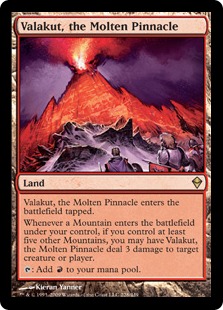 boring (if tense) to play against. I get that, but that can also be said for Valakut, the Molten Pinnacle, and (until Dryad of the Illysian Grove, anyway) nobody seemed to have any problem with that card. Once Valakut hits its threshold, the game is likely lost for any fair and/or slow deck. It may even actually be over if it happens via Scapeshift and Valakut combos off.
boring (if tense) to play against. I get that, but that can also be said for Valakut, the Molten Pinnacle, and (until Dryad of the Illysian Grove, anyway) nobody seemed to have any problem with that card. Once Valakut hits its threshold, the game is likely lost for any fair and/or slow deck. It may even actually be over if it happens via Scapeshift and Valakut combos off.
Once Field is active, the game is often just as over. However, it doesn't feel as over. Field is a far slower grind-out than Valakut, and it always looks like there are ways out. Because there are. Aggro decks can trample over tokens, fly over them, or protection on through. Control can use Cryptic to force attacks to connect or stall to win via Jace, the Mind Sculptor. However, for non-blue, non-evasive, and non-combo decks, there are few good ways to push through the tokens. Which is a fairly narrow set of decks, all things considered, but not so narrow that it isn't worth considering. And it's natural to feel frustrated, but I can't imagine those decks had decent matchups against old-model Valakut either.
Looking at the Lock
As for Sanctuary, and as someone who's played the lock (and even ran Deprive to maximize the utility), I understand how it can be frustrating to play against. It's not fun to get locked. The problem is that if you're actually locked by Sanctuary and Cryptic, the game was already over. The lock is a formality, because the pilot is too far ahead for opponents to come back. If they had to rely on the loop, they were likely struggling to survive.
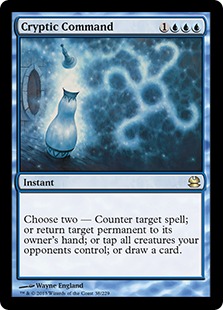 Speaking from experience, the loop is a massive tempo drain, and very expensive. I first cast Cryptic, bounce Sanctuary, then replay Sanctuary. Thus, every turn I initiate the loop, I lose a land drop. Every time I use Sanctuary, I lose a draw step. If I wasn't already far ahead, I'm about to rapidly fall behind. Then there's the problem that the loop cannot be done every turn without help. Whether it's two Cryptics in hand at the start, fetching up another Sanctuary, or accessing another source of card draw, performing the lock every turn requires other cards in the picture. And if that has come together, control decks probably aren't losing anyway. And finally, constantly running the loop means never advancing the board. Cryptic is expensive; I'm replaying the same land, and every turn, redrawing a Cryptic. That's a really slow gameplan that gives the opponent plenty of time to find an out.
Speaking from experience, the loop is a massive tempo drain, and very expensive. I first cast Cryptic, bounce Sanctuary, then replay Sanctuary. Thus, every turn I initiate the loop, I lose a land drop. Every time I use Sanctuary, I lose a draw step. If I wasn't already far ahead, I'm about to rapidly fall behind. Then there's the problem that the loop cannot be done every turn without help. Whether it's two Cryptics in hand at the start, fetching up another Sanctuary, or accessing another source of card draw, performing the lock every turn requires other cards in the picture. And if that has come together, control decks probably aren't losing anyway. And finally, constantly running the loop means never advancing the board. Cryptic is expensive; I'm replaying the same land, and every turn, redrawing a Cryptic. That's a really slow gameplan that gives the opponent plenty of time to find an out.
And there are a plethora of outs. I'm going to draw attention to my favorite drum to bang, but that's hardly it. Field of Ruin is highly played, and prevents the lock. Green decks can get through the counter-lock with Veil of Summer. Black has discard. And any deck can just overwhelm a counter wall with patience. Constantly fogging combat is annoying, but Humans can Meddling Mage or Gaddock Teeg to break it up. And Death and Taxes doesn't worry about the loop at all. In addition to land destruction, there's Vialed-in Flickerwisp. Archon of Emeria also breaks it, because the Sanctuary won't enter untapped, and thus won't trigger at all.
The Uro Connection
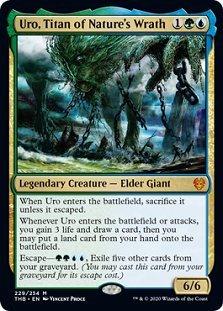 And that bring me back to my most pressing point: neither Field nor Sanctuary would be real players in the metagame without Uro. Consider my earlier stats, and then also consider that MTGGoldfish says the average number of Uros per deck is 3.3, while Field is 1.9 and Sanctuary is 2.2. MTGTop8 concurs, with Uro at 3.3, Field at 1.8, and Sanctuary at 2.0. The lands are minor parts of their decks compared to Uro. Again, this is to be expected of late-game cards, but clearly the gameplan doesn't revolve around them.
And that bring me back to my most pressing point: neither Field nor Sanctuary would be real players in the metagame without Uro. Consider my earlier stats, and then also consider that MTGGoldfish says the average number of Uros per deck is 3.3, while Field is 1.9 and Sanctuary is 2.2. MTGTop8 concurs, with Uro at 3.3, Field at 1.8, and Sanctuary at 2.0. The lands are minor parts of their decks compared to Uro. Again, this is to be expected of late-game cards, but clearly the gameplan doesn't revolve around them.
More to the point, players have to survive long enough to get those lands online, and that's what Uro does best. The Titan gets decks to the later stages of the game with less investment or opportunity cost than any other option. Uro draws a card (more likely to find the critical cards), it gains life (more likely to survive into the late game), and grants an extra land drop (progression to the late game), in addition to letting decks that wouldn't otherwise be interested in ramp or lifegain have it all. There is a reason that both Field and Sanctuary were relatively minor players until Uro arrived.
It's Good to Have Land
I get that Field of the Dead and Mystic Sanctuary frustrate some players. However, they're only becoming major players in Modern thanks to Uro. Uro makes it far easier to activate those lands, and its prevalence is pulling up that of these lands. I'd argue that without Uro in the picture, Field, and particularly Sanctuary, would see far less play than they currently do. Plus, Uro is an enabler; the lands are payoffs. Blame-the-enabler is the moral of the Modern ban list.





You’re the best writer in magic. I’ll stand by that. Cheers
Thanks!
Happy Thanksgiving Modernnexus!
First, I’d echo Michael Lewis’ post, you and Jordan are some of, if not the, strongest writers out there creating content for sure. And the fact that you consistently are able to find new things to say about the format says wonders about the the format, but also about you as writers.
With regards to the article, of course, I think your analysis is spot; however, I’d contend that the root of the lay in the way Wizards designs triggered abilities. The community loves to complain (myself included) about “problem cards” in modern, and while some like Teferi, Time Raveler don’t come with triggered abilities attached, many, many do. The answer to problem cards like FotD might be better LD. But that doesn’t stop “Oops All Spells” or Dredge from Creeping Chilling it’s way to a free 24 points worth of life swing. Or Swiftspears from becoming 1 mana 7/8s on turn 2. What modern (and Magic more broadly) needs is a Pithing Needle that hoses triggered abilities. A card like this would allow Mystic Sanctuary or Uro or other problematic cards to exist without being oppressive. Yes, a clause that prevents you from naming a card in your own deck might be necessary (or else our days would all be eaten by 4 mana 9/8 trampling fliers).
But sadly, I’m not sure Wizards is even aware of the larger problem. My two cents.
Again, happy Thanksgiving, stay safe. Keep the amazing articles coming.
Triggered-abilities Pithing Needle: love it! Closest we’ve got is like, Alpine Moon? But… you still have to side it, bring it in, and draw it, so the “problem” may well persist post-printing. That’s devil’s advocate though; I’m all for new answers, especially playable bullets that affect the game in unconventional ways!
While we’re at it, how about triggered-abilities Phyrexian Revoker? Wizards? Are you listening? Happy belated thanksgiving, Dan!